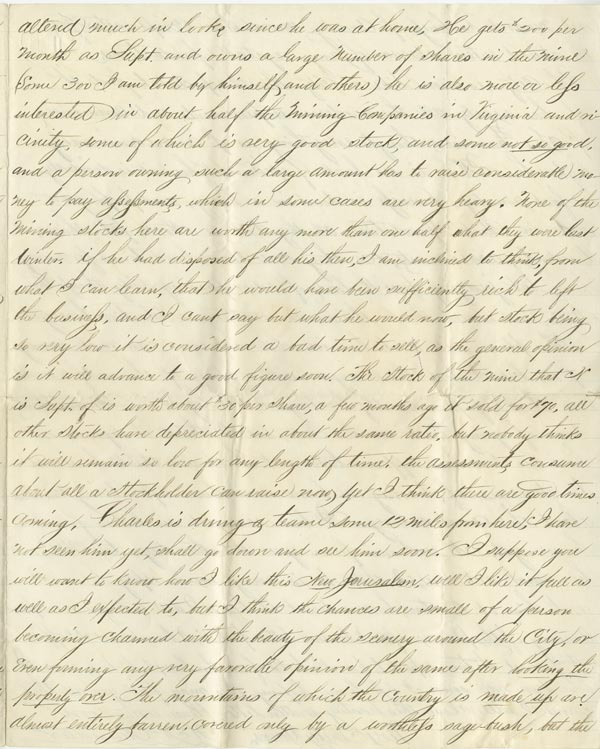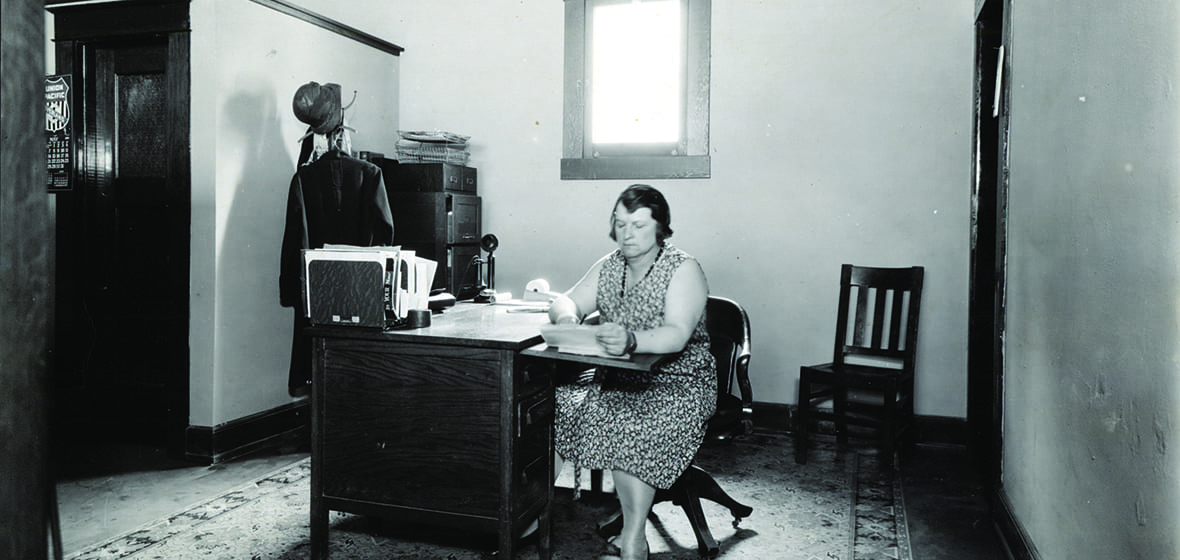Putting pen to paper was once common and necessary, but in today's digital age the art of writing a letter is often lost. Modern technology simply can't touch the personal connection that a hand-written letter delivers. If you enjoy writing letters, or appreciate receiving hand-written letters in the mail then "Letters Home" is the perfect exhibit for you.
Letters Home explores Nevada's 160-year history through letters and correspondence written by the people who lived in and traveled to the state. The exhibit is on display now through December 2017 in the Special Collections & University Archives Department and throughout the third floor of the Mathewson-IGT Knowledge Center.
Exhibit curator Jessica Maddox came up with the idea to curate this exhibit as she was going about her job as an Accessioning Archivist in Special Collections.
"I picked up a letter, read it and thought 'wow!' there are so many things to learn about the people and history of our state by reading the letters we have in our collection," Maddox said.
From there she began working to bring the exhibit to life by identifying and pulling letters from more than 30 collections housed in the Department.
"People write letters for many reasons," she said. "By writing a letter individuals are able to illustrate the everyday occurrences that make a person or a place unique, convey their observations or impressions of where they are, describe the landscapes they see, and express feelings of loss to friends and relatives."
Letters on display cover a variety of themes including: landscape and weather, mining, ranching, business, everyday life, military, Native Americans, postage and the use of paper, and of course, vices.

Featured letter in the Letters Home Special Collections Exhibit on display now on the third floor of the the Mathewson-IGT Knowledge Center. Page 3 of a letter written by H. H. Chandler. Chandler discusses mining in Nevada in June 1864.
The exhibit features the writing of several recognizable Nevadans. For example, letters between well-known journalist Joe McDonald and former United States Senator Pat McCarran highlight the struggle to determine whether or not McDonald's son had died in action during World War II. Through their correspondence, it was learned that McDonald was alive as a prisoner of war in China, and indeed not dead.
Other letters feature the writing of Mary Arrowsmith Evans, sister of John Newton Evans, and the name associated with the founding of the University of Nevada, Reno, Evans Ranch and Evans Avenue in Reno. Mary Evans took a railroad journey approximately six months after the Transcontinental Railroad was completed and wrote letters about her experience.
"Mrs. Evans was a widow when she hopped on a train in Defiance, Ohio and headed West," Maddox said. "The fact that she could do this and document what she saw when she stopped in Promontory, Utah and Reno is so important. She begins to tell the story of how her family was going to greatly impact the development of Reno."
Of all of the letters on display, Maddox does have a favorite.
"My absolute favorite letter is from the 1880s and it's a letter from a man on the Comstock writing about his desire to purchase a chicken," she said. "Who would have guessed that people living on the Comstock were also in the market for chickens?!"
All of the letters on display showcase the important historical documents housed in Special Collections.
When asked what she hopes people take away from the exhibit Maddox said, "Special Collections has materials to help the University and northern Nevada community make connections to the place in which we live."
She added, "Letters Home documents who we are and how we got to where we are as a state. What better way to demonstrate this by showcasing letters from the people who lived here and made history."
For information on "Letters Home" please contact Jessica Maddox via email at maddoxj@unr.edu or via phone at 775-682-5672.
If you have a piece of Nevada history you'd like to donate (i.e. historical documents, manuscripts, or photographs) to Special Collections at the University of Nevada, Reno, they'd love to hear from you. Contact the department via phone at 775-682-5665 or email specoll@unr.edu.












